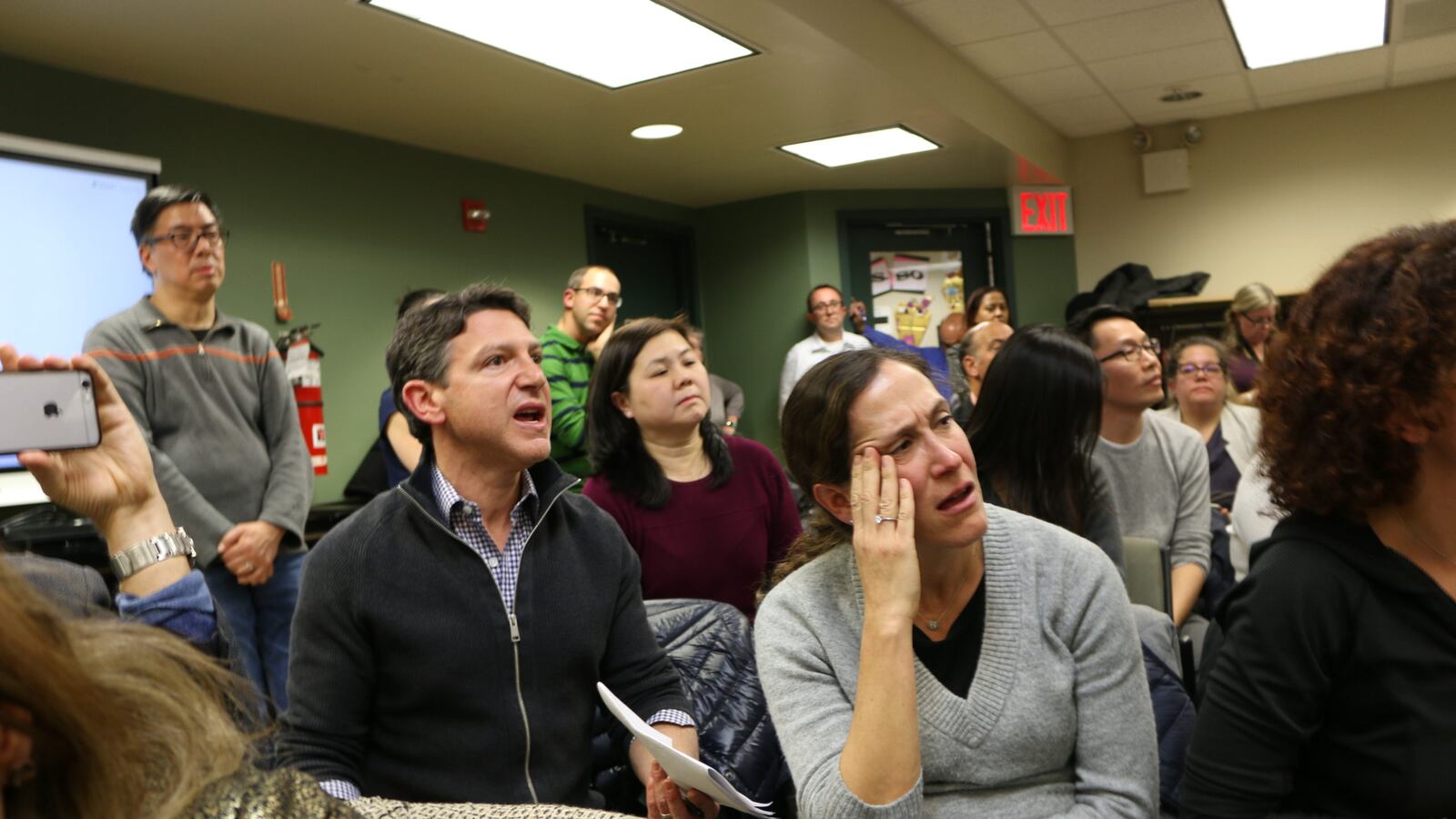A controversial Queens middle school integration effort that garnered intense parent backlash has been delayed — even before the community engagement process officially kicked off.
Families in District 28, spanning from Forest Hills and Rego Park to Jamaica and Richmond Hill, have turned out in force at public meetings over the past couple of months to voice opposition to the possible plan. WXY Studio, a consulting firm hired by the city to lead the community engagement process — as it did for middle schools in Brooklyn’s District 15 — had anticipated starting a series of public workshops last month, and was expected to have recommendations ready by June.
That timeline, however, is being delayed, and the education department has not set a new one. The move was announced at a meeting held Thursday by District 28’s Community Education Council, a parent-led advisory group that oversees local zoning issues, and was first reported by the Wall Street Journal.
“Our number one priority is to help create a process that offers as many opportunities as possible for parents, students, educators and all other community members to provide feedback and input,” Katie O’Hanlon, an education department spokeswoman, said in a statement. “We will make sure that parental and community input is maximized and this process is inclusive and productive for all.”
Such a delay is not unprecedented: The education department recently hit pause on another controversial rezoning effort for Brooklyn’s elementary schools in District 15. In that case, city officials said they were heeding concerns that parents in mostly low-income neighborhoods hadn’t been properly engaged in the process.
Slowing down the process could be seen as a win for both those fighting the integration effort and those in favor.
“You should be proud,” Howard Pollack, a member of the education council, reportedly told parents at Thursday’s council meeting. “Because they heard you.”
Supporters, on the other hand, said the pause could lead to a more inclusive process, which has so far been largely lacking voices from the district’s large Hispanic and black communities.
“My understanding is that this is a pause to make sure that we’re being more inclusive, and answering those transparency issues,” said Nyah Berg, who advocates for integrated schools with the nonprofit Appleseed.
The community-led process that WXY facilitated, and was lauded in Brooklyn, was met with anger and distrust in District 28. Queens parents tried to discredit the process as not being transparent or inclusive.
“It’s our assumption that [the chancellor] and WXY is trying to ram through a de-zoning, forced busing, quota plan — and disguising it behind the smoke and mirrors of this false community involvement,” Jason Fink, a parent in the district, said.
Across District 28, about 30% of students are Asian, just under 28% are Hispanic, almost 22% are black, and about 16% are white. But not a single school reflects the area’s demographics, according to a recent analysis from the Citizens’ Committee for Children of New York.
The north is higher income and whiter, though quite diverse. Immigrants make up more than half of the residents in Forest Hills and Rego Park, according to 2018 data from NYU’s Furman Center for real estate and urban policy. Many come from Russian-speaking nations, but there’s also a substantial Chinese community, figures from the Department of City Planning show.
To the south is Jamaica, where many black residents live. There’s also Richmond Hill, home to a mix of working-class Indo-Caribbean Guyanese, Indian Punjabi, and Bangladeshi neighborhoods. The area is lower-income and also has a sizeable Muslim community.
Segregation in the area’s neighborhoods helps drive divisions in middle schools: Most of District 28’s middle schools are zoned, meaning enrollment is assigned based on where students live. Families often buy or rent homes and apartments with the expectation of going to certain schools, segregating students based on what their parents can afford.
Some District 28 parents argue that the city would be better served by focusing on struggling schools. When segregation leads to extreme concentrations of poverty, schools often have teachers with fewer years of experience, crumbling infrastructure, and PTAs that can’t compete with those in more affluent areas.
“Instead of worrying about spreading out all the inequality, focus on the schools in the south. Build the schools up in the south with the basic, necessary tools that the students need,” Lorraine Reid, whose child attends Redwood Middle School in the southern end of the district, said at a recent public meeting.
Integration advocates say that diversifying schools could be a way to address disparities in both resources and academic achievement: Studies that show that attending diverse schools can help boost learning for all kinds of students and provide more access to resources, such as qualified teachers and well-maintained buildings.

